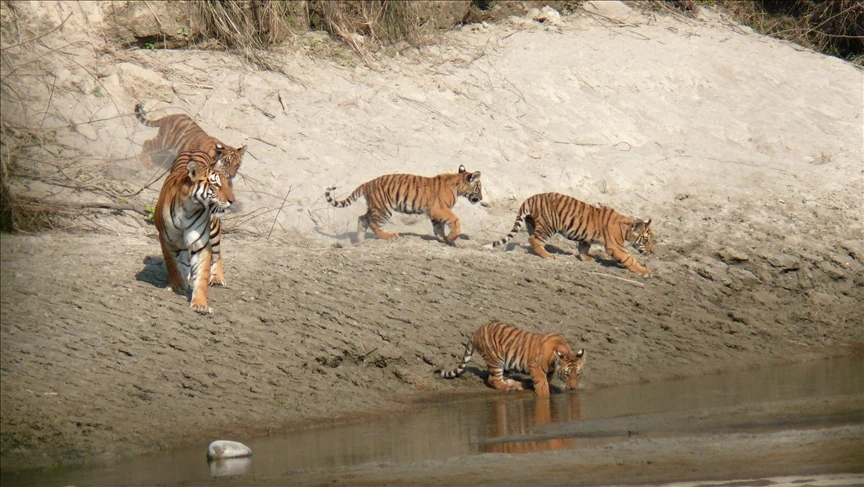Nepal’s tiger numbers explode, intensifying conflicts with wildlife
 A tigress with her four cubs has been spotted in Bardiya National Park, Nepal. (AA Photo)
A tigress with her four cubs has been spotted in Bardiya National Park, Nepal. (AA Photo)
The increasing number of Bengal tigers in Nepal has heightened human-wildlife conflict and added challenges in managing rescued big cats, primarily due to inadequate facilities.
Nepal’s 2021 tiger census showed the number of tigers reached 355, nearly triple the total number from 12 years ago, the Kathmandu Post reported Wednesday.
Nepal’s tiger population nearly tripled to 355 in 12 years, but reducing conflicts and managing captured tigers remains a struggle, say officials.https://t.co/zt0GT6Gsqi —by Bhawani Bhatta
— The Kathmandu Post (@kathmandupost) April 2, 2025
Royal Bengal tigers are found in multiple national parks and forests throughout the Tarai region.
Wildlife experts view the tiger population growth as a positive conservation outcome, but they warn that the rising numbers have put a strain on limited resources, particularly funding and the lack of functional rescue centers.
Tiger found in wheat field
In a recent event, villagers in Kanchanpur district of Sudurpashchim province encountered a full-grown tiger in a wheat field. Authorities captured the animal after a 24-hour operation but were compelled to release it the next day, as no suitable shelter was available.
“We kept the tiger at our office for two days but couldn’t find space in any rescue centers or the zoo. Following discussions with stakeholders, the tiger was released in the core area of the national park,” said Ram Bichari Thakur, the chief of the Division Forest Office in Kanchanpur.
“We continue to face difficulties in managing rescued wildlife due to the lack of a rescue center,” said Purushottam Wagle, a conservation officer at the Shuklaphanta National Park.
“Rescuing problem in wildlife is just part of the challenge — finding a long-term solution for their care and management is even more difficult,” he added.
Conservationists say the tigers currently held in cages at various parks are aggressive and cannot be returned to the wild. If released, they warn, the animals are likely to return to human settlements and pose serious risks.



